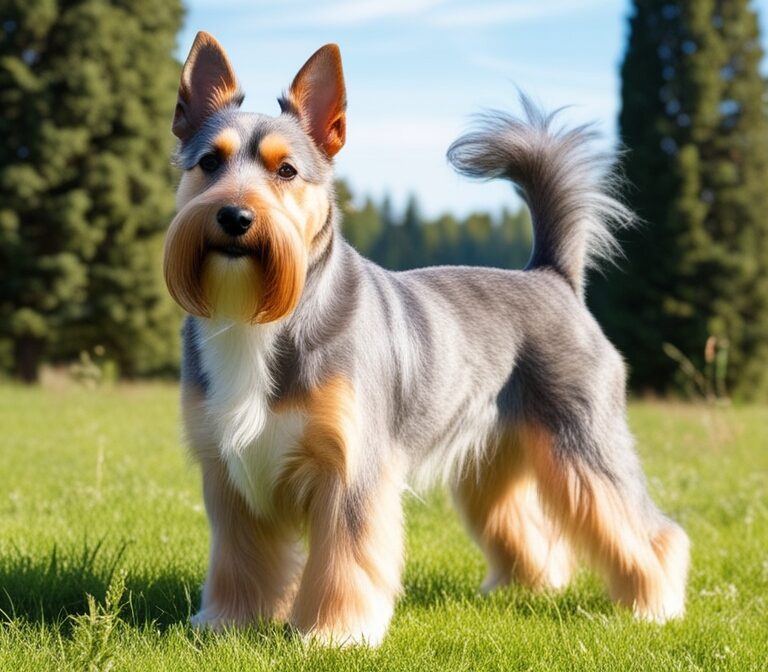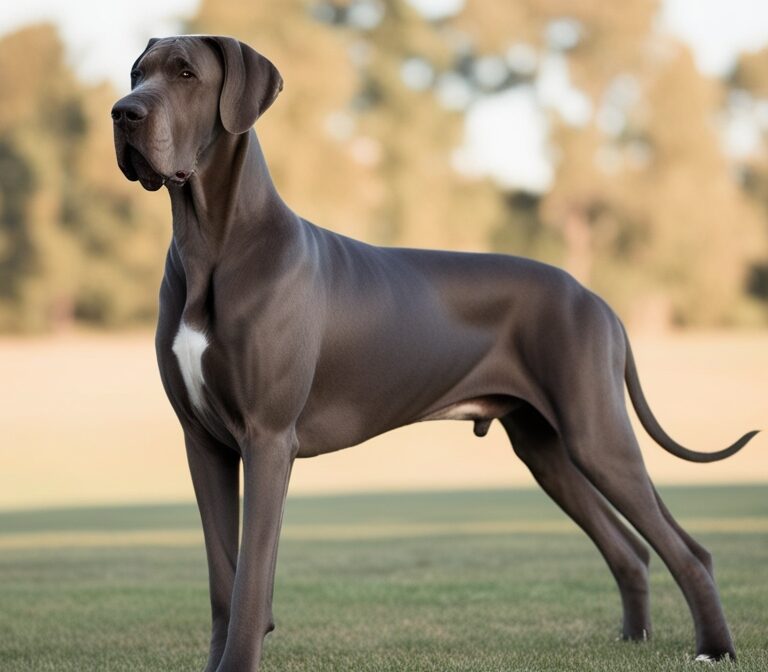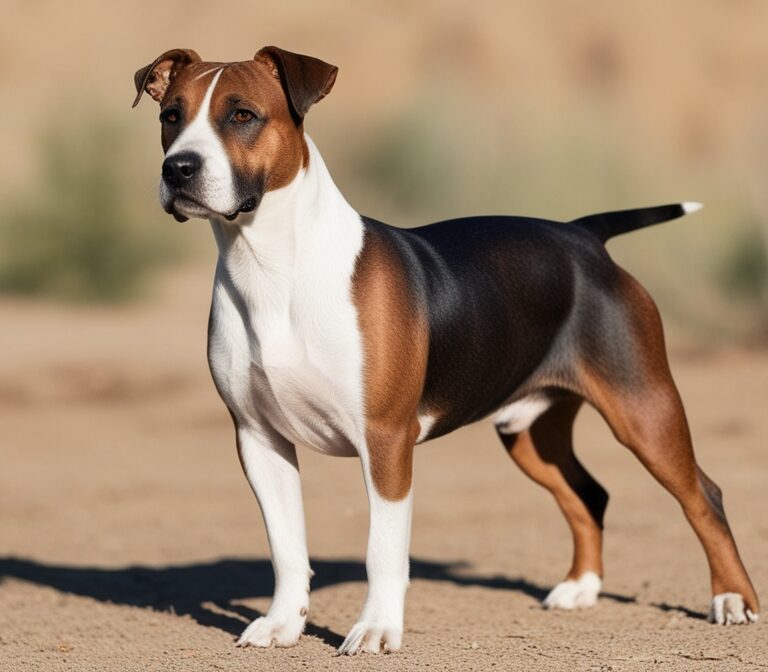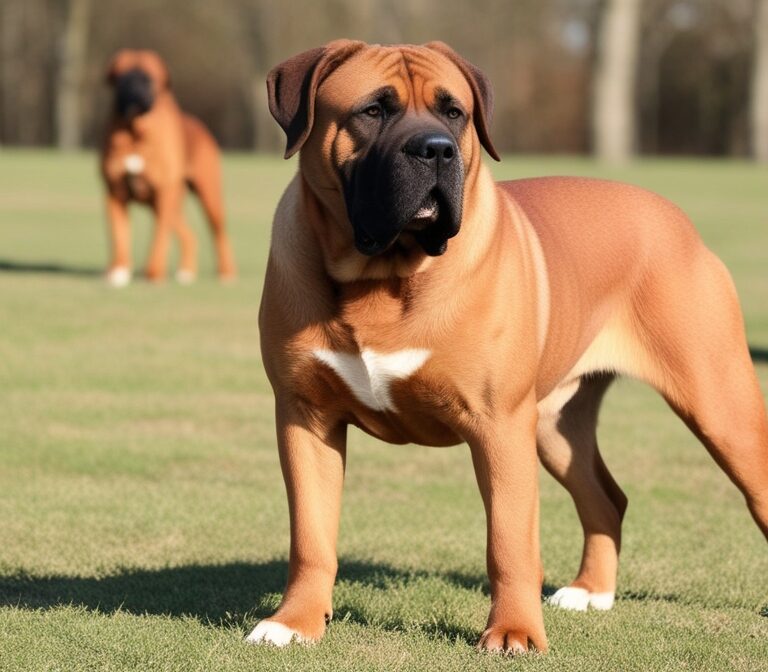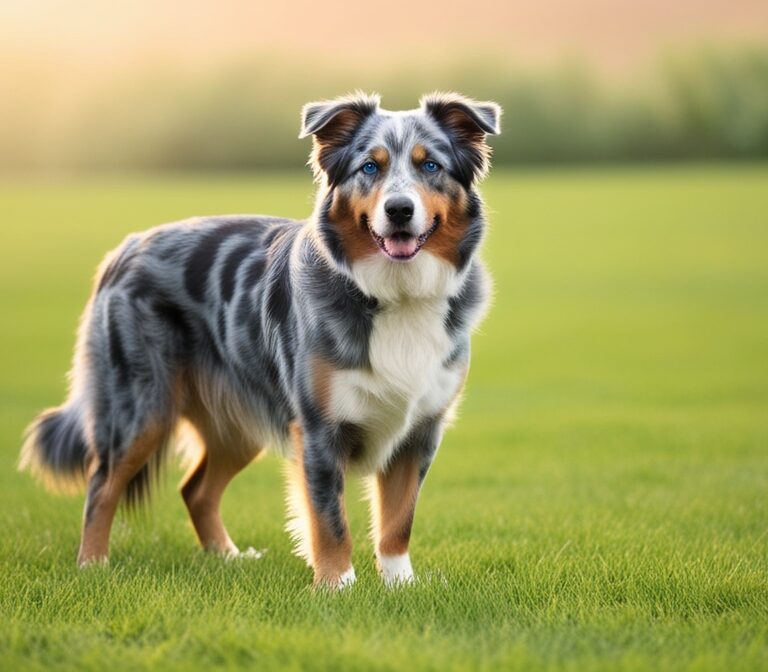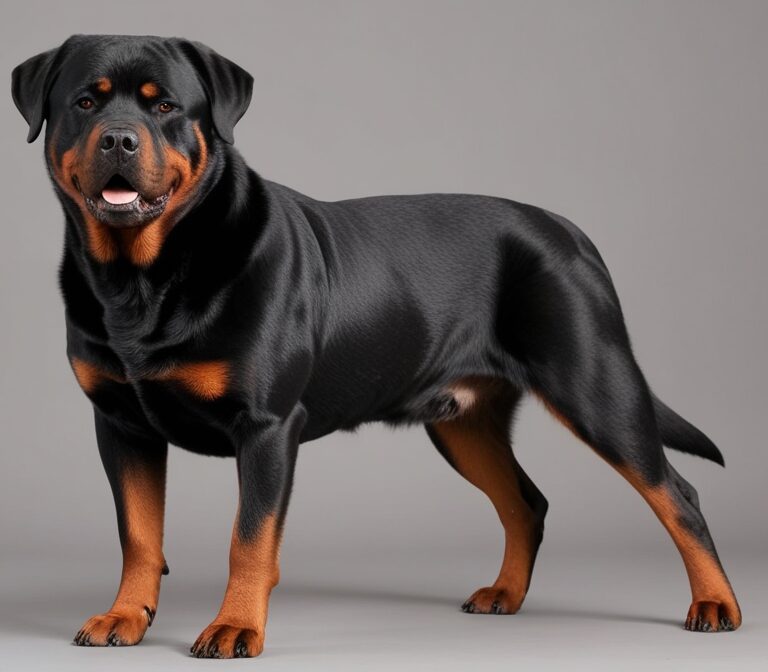Schnauzer – Complete Breed Guide for Dog Lovers
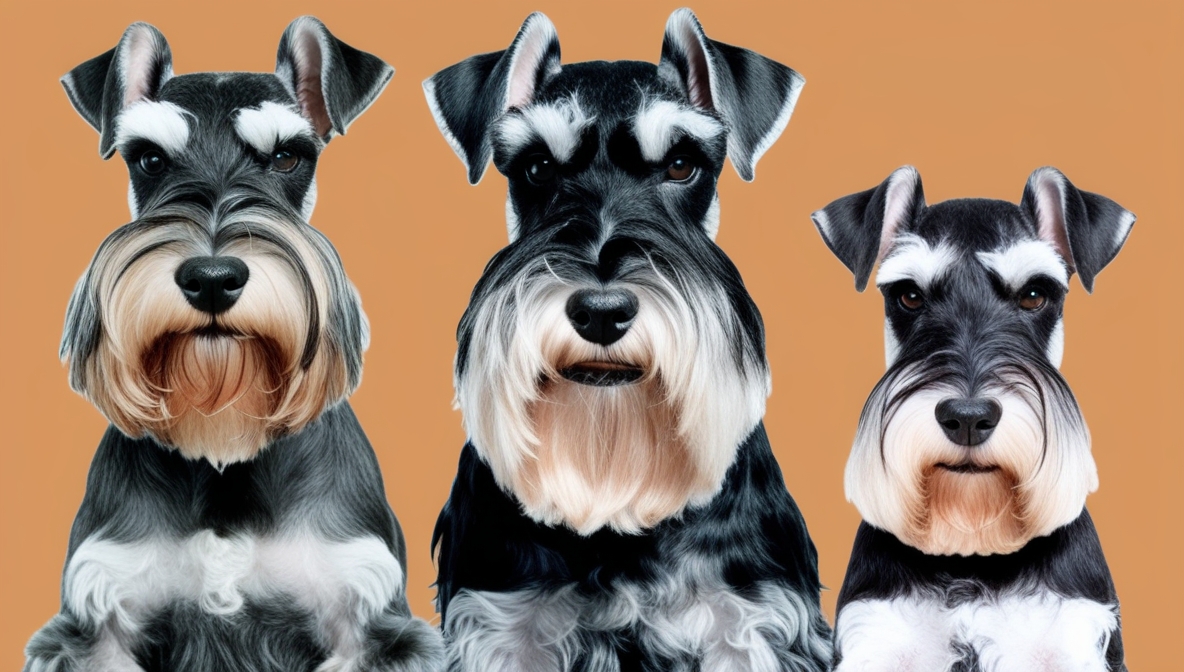
Introduction to Schnauzers
The Schnauzer is a distinctive dog breed known for its square-shaped body, wiry coat, and iconic beard with bushy eyebrows. Originating in Germany, this versatile breed has become a global favorite due to its intelligence, loyalty, and adaptability. Whether in the form of the Miniature Schnauzer, the Standard Schnauzer, or the Giant Schnauzer, these dogs share core characteristics that make them both excellent family companions and reliable working dogs.
What sets Schnauzers apart from other breeds is their combination of charm and practicality. They are not only visually unique but also protective, alert, and hypoallergenic, making them suitable for households where allergies are a concern. Many owners are drawn to their expressive eyes and dignified personality, which reflect both independence and affection.
In this guide, we will explore the history, temperament, grooming needs, health, training tips, and lifestyle requirements of Schnauzers. We’ll also compare them to similar breeds and cover essential ownership costs so you can determine if a Schnauzer is the right dog for you. By the end, you’ll have a complete understanding of why the Schnauzer has remained a beloved companion for centuries.
Origin and History of the Schnauzer Breed
The Schnauzer breed has a rich history dating back to the 15th and 16th centuries in Germany, where it was originally bred as a farm dog. Farmers needed a multi-purpose working dog capable of guarding property, herding livestock, and controlling vermin such as rats. The Schnauzer’s medium size, wiry coat, and sharp instincts made it ideal for these tasks.
The name “Schnauzer” comes from the German word Schnauze, meaning “snout” or “muzzle,” referencing the dog’s characteristic bearded face. Historical artwork from the Renaissance period often depicts Schnauzer-like dogs accompanying peasants and merchants, showing their long-standing role in society.
As Germany entered the 19th century, breeders refined the Standard Schnauzer and began developing two additional variations:
- The Miniature Schnauzer, created by crossing the Standard with smaller breeds like the Affenpinscher and Miniature Poodle, became popular for ratting and companionship.
- The Giant Schnauzer, developed by crossing the Standard with Great Danes and Bouvier des Flandres, was used as a cattle-driving dog and later as a police and military service dog.
By the early 20th century, Schnauzers had gained international recognition. The American Kennel Club (AKC) first registered the Standard Schnauzer in 1904, followed by the Miniature and Giant varieties. Their reputation as hard-working, intelligent, and loyal dogs made them increasingly popular worldwide.
Today, Schnauzers are recognized not only as family pets but also as therapy dogs, service dogs, and even competitive agility champions. Their history as both protectors and companions continues to define their strong bond with humans.
Types of Schnauzers
One of the defining aspects of the Schnauzer breed is that it exists in three distinct sizes, each with its own history, temperament, and suitability for different lifestyles. While all three share the trademark wiry coat, expressive eyebrows, and bearded muzzle, they vary significantly in terms of size, energy, and purpose.
Miniature Schnauzer
The Miniature Schnauzer is the smallest variety, weighing 5–9 kg (11–20 lbs) and standing about 12–14 inches tall. Originally bred to control rats and vermin on farms, the Miniature has since become a popular companion dog. It is known for being playful, alert, and affectionate while still retaining a watchdog’s instinct. Due to its size, the Miniature Schnauzer is apartment-friendly and suits urban families.
Standard Schnauzer
The Standard Schnauzer is the original version, weighing 14–20 kg (30–50 lbs) with a height of 17–20 inches. Historically, this was the all-purpose farm dog, excelling at guarding, herding, and hunting rats. The Standard is considered the foundation of the breed and is recognized for its balanced temperament—protective yet gentle with family members. It is ideal for those seeking a medium-sized working dog with a strong sense of loyalty.
Giant Schnauzer
The Giant Schnauzer is the largest of the three, weighing 25–48 kg (55–105 lbs) and standing 23–28 inches tall. Originally developed for cattle driving and guarding breweries, the Giant is powerful, protective, and highly intelligent. It requires intensive training, exercise, and mental stimulation, making it more suitable for experienced dog owners. Due to its strength and guarding instincts, it has also been used in police and military service.
Despite their size differences, all Schnauzers share traits such as intelligence, loyalty, and high energy levels. However, choosing the right type depends on the owner’s lifestyle. Families in apartments may prefer the Miniature, active households with space might enjoy the Standard, while experienced handlers looking for a protective working dog may opt for the Giant Schnauzer.
Physical Characteristics of Schnauzers
The Schnauzer is instantly recognizable due to its distinctive appearance, characterized by a rectangular build, harsh wiry coat, and signature beard with bushy eyebrows. These features not only make the Schnauzer unique but also serve practical purposes developed during its history as a working dog.
Coat Texture
A defining trait of all Schnauzers is their double coat, consisting of a harsh, wiry topcoat and a soft undercoat. This coat type is designed to protect the dog from harsh weather and dirt, making it suitable for both outdoor work and urban living. Owners often keep Schnauzers groomed in the classic “Schnauzer cut,” which emphasizes their beard and eyebrows.
Facial Features
The Schnauzer beard is perhaps its most iconic feature, giving the breed its dignified and almost human-like expression. Their arched eyebrows enhance their alert look, while their dark, oval-shaped eyes convey intelligence. Ears may be cropped in some countries, but naturally, Schnauzers have V-shaped, folded ears.
General Impression
Overall, the Schnauzer’s appearance combines strength, elegance, and functionality. Their wiry coat reduces shedding, making them one of the hypoallergenic dog breeds. Combined with their athletic frame and iconic facial features, Schnauzers are both practical working dogs and charming companions.
Schnauzer Temperament and Personality
The Schnauzer temperament is a defining factor in its popularity. Known for being alert, energetic, intelligent, and loyal, Schnauzers have a personality that balances playfulness with protectiveness. These dogs thrive on interaction and are happiest when they feel like part of the family.
Protective Instincts
Schnauzers were historically bred as guard dogs and rat catchers, which explains their watchful and protective behavior. Even the Miniature Schnauzer, despite its small size, has a strong watchdog instinct and will bark to alert its family of strangers. This makes Schnauzers excellent home protectors, but owners must manage excessive barking through training.
Intelligence and Trainability
The Schnauzer is ranked among the most intelligent dog breeds, able to learn commands quickly. However, their intelligence also makes them independent thinkers, which can lead to stubbornness if not managed with consistent training. They excel in obedience, agility, and even service work, making them highly versatile.
Social Behavior
While Schnauzers are affectionate with family, they may be reserved or aloof with strangers. Early socialization with people and other pets is important to ensure they develop balanced behavior. Miniatures tend to be more outgoing, while Giants are naturally more serious and protective.
Summary
In personality, Schnauzers are a mix of alert watchdog, energetic playmate, and loyal family member. Their versatility makes them well-suited for a variety of households, but owners should be prepared to meet their exercise, training, and socialization needs to bring out the best in their temperament.
Schnauzer Lifespan and Longevity
The lifespan of a Schnauzer depends largely on the size variety—Miniature, Standard, or Giant—with smaller dogs generally living longer. Proper nutrition, exercise, and veterinary care also play a major role in determining how many years a Schnauzer will thrive as a loyal companion.
Average Lifespan by Type
- Miniature Schnauzer: 12–16 years. Their small size contributes to their longer lifespan compared to larger breeds.
- Standard Schnauzer: 12–14 years. As the middle-sized variety, they enjoy relatively long life expectancy when well cared for.
- Giant Schnauzer: 10–12 years. Larger breeds typically have shorter lifespans due to stress on joints, heart, and metabolism.
Factors Influencing Longevity
Genetics play an important role, and responsible breeders screen for hereditary conditions such as hip dysplasia, progressive retinal atrophy (PRA), and pancreatitis in Miniatures. However, lifestyle choices significantly impact life expectancy. A balanced diet, regular exercise, weight management, and preventive veterinary care can add years to a Schnauzer’s life.
Healthy Aging in Schnauzers
Older Schnauzers may experience joint stiffness, vision decline, or decreased activity levels, but with the right support, they can enjoy a comfortable senior life. Owners should consider providing joint supplements, softer diets, and regular health checkups once the dog enters its senior years.
Grooming and Coat Care
The Schnauzer’s coat is one of its most distinctive features, requiring regular maintenance to keep it healthy and looking sharp. The double coat—a wiry topcoat with a soft undercoat—is designed to protect against weather and dirt, but it needs consistent care to prevent matting and overgrowth.
Grooming Techniques
Owners typically choose between two main grooming methods:
Hand Stripping – The traditional method for maintaining a wiry coat texture. It involves plucking dead hairs by hand or with a stripping knife. Common for show dogs.
Clipping or Trimming – A more practical option for pet owners. It keeps the coat tidy but can soften the coat texture over time.
Brushing Requirements
Schnauzers should be brushed 2–3 times a week to prevent tangles, especially around the beard and leg furnishings, where food and debris often collect. Regular brushing also reduces shedding, although Schnauzers are already considered low-shedding and hypoallergenic dogs.
Bathing and Hygiene
Bathing every 4–6 weeks keeps the coat clean without stripping natural oils. Special attention should be given to the beard area, as it tends to stain from food and saliva. Ear cleaning, nail trimming, and dental care are also essential parts of routine grooming.
Summary
Regular grooming not only keeps a Schnauzer looking sharp with its classic “Schnauzer cut” but also ensures skin health and overall hygiene. Owners should plan for consistent care, as grooming is not optional for this breed—it’s a necessity.
Training a Schnauzer
Training a Schnauzer can be both rewarding and challenging due to the breed’s combination of intelligence, energy, and independence. These dogs are quick learners but often have a stubborn streak, requiring consistency and patience from their owners.
Obedience Training
Early obedience training is essential. Teaching commands such as sit, stay, come, and heel helps establish authority and prevents unwanted behaviors like jumping or excessive barking. Schnauzers respond best to positive reinforcement methods such as treats, praise, and play.
Socialization Needs
Like many protective breeds, Schnauzers benefit from early socialization with people, children, and other animals. This reduces the risk of them becoming overly territorial or wary of strangers. Puppy training classes are highly recommended.
Common Training Challenges
- Barking: Schnauzers are natural watchdogs and may bark excessively. Training should focus on teaching the quiet command.
- Stubbornness: Their independent nature means they may test limits. Consistency and firmness are crucial.
- Leash Pulling: High energy levels make leash training important to prevent pulling on walks.
Advanced Training and Activities
Due to their intelligence, Schnauzers excel in advanced activities like agility, obedience trials, tracking, and rally sports. The Giant Schnauzer, in particular, often participates in police and service dog work, requiring advanced discipline.
Exercise and Activity Requirements
The Schnauzer breed is highly energetic and requires daily physical and mental stimulation to stay healthy and well-behaved. Without sufficient exercise, these dogs may become bored and destructive.
Daily Activity Needs
- Miniature Schnauzer: Requires about 45–60 minutes of daily activity. Walks, play sessions, and puzzle toys are ideal.
- Standard Schnauzer: Needs at least 1–1.5 hours of exercise daily, including brisk walks and free play.
- Giant Schnauzer: Requires 2+ hours of vigorous activity each day. Running, hiking, and advanced obedience work are essential.
Suitable Games and Sports
Schnauzers thrive in interactive games such as fetch, tug-of-war, and hide-and-seek. Many excel in dog sports like agility, herding, and rally obedience, which engage both body and mind.
Mental Stimulation
Because Schnauzers are highly intelligent, mental challenges are just as important as physical ones. Puzzle toys, obedience training, scent games, and trick training prevent boredom and channel their intelligence positively.
Exercise Considerations
Owners should keep in mind that Schnauzers are alert watchdogs and may be easily distracted by noises or strangers during walks. A secure leash and well-fenced yard are important for safety.
Nutrition and Feeding Guide
Proper nutrition is fundamental to keeping Schnauzers healthy, active, and long-lived. Their diet should support their energy levels, coat health, and immune system, while avoiding foods that may trigger health problems.
Recommended Diet
A high-quality balanced dog food with protein as the first ingredient is ideal. Look for options with lean meats, whole grains, vegetables, and omega-3 fatty acids to support coat and joint health. Schnauzers may benefit from diets formulated for active breeds.
Feeding Amounts by Weight
- Miniature Schnauzer: ½ to 1 cup of food per day, divided into two meals.
- Standard Schnauzer: 1.5 to 2.5 cups daily, depending on activity level.
- Giant Schnauzer: 3 to 5 cups daily, spread over two or three meals to prevent bloating.
Foods to Avoid
Schnauzers are prone to pancreatitis, especially Miniatures, which means fatty foods should be avoided. Human foods such as chocolate, grapes, onions, and garlic are toxic. Table scraps should be minimized to prevent obesity.
Supplements and Special Diets
Joint supplements with glucosamine and chondroitin can help larger Schnauzers, while fish oil supports skin and coat health. Some Schnauzers may require grain-free or low-fat diets, particularly if they suffer from food sensitivities.
Conclusion :
The Schnauzer is more than just a striking German dog breed with a wiry coat, bushy eyebrows, and iconic beard—it is a loyal, intelligent, and adaptable companion. Across all three types—the Miniature Schnauzer, Standard Schnauzer, and Giant Schnauzer—owners consistently find a mix of playfulness, protection, and devotion that makes this breed one of the most versatile in the canine world.
Choosing a Schnauzer means choosing a dog that will be alert enough to protect your home, yet affectionate enough to bond deeply with your family. Their intelligence makes them easy to train in obedience, agility, and even service work, but it also requires owners who are willing to provide mental stimulation and consistent leadership. For families with children, the Schnauzer offers endless playfulness and energy, while for individuals or couples, they provide companionship and loyalty.
Whether you choose the Miniature for urban living, the Standard for balanced family life, or the Giant for protection and working ability, each variety offers unique benefits while carrying the same distinctive Schnauzer spirit. With the right care, they can live long, healthy lives—12 to 16 years for Miniatures, 12 to 14 years for Standards, and 10 to 12 years for Giants.
In conclusion, the Schnauzer is an all-around companion—a breed that combines charm, courage, intelligence, and loyalty. For those willing to invest in training, grooming, and exercise, the reward is a devoted dog that not only fits seamlessly into family life but also enriches it with character, energy, and unconditional love.
